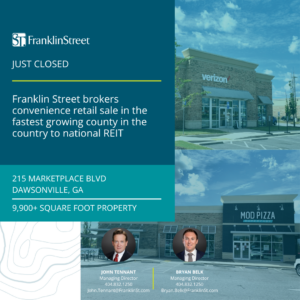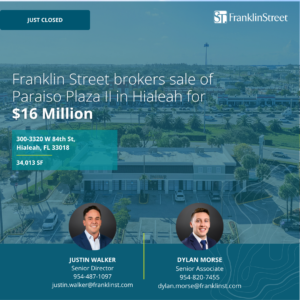Despite initial uncertainty, the 2017 real estate market remains bullish.
The U.S. economy grew by 1.6% last year, with the Federal Reserve anticipating growth to hover around 2.1%. While slower than average, the growth was on par with previous bubble years, prompting concern from the Fed about rising CRE prices. Last December, it was announced that interest rates would increase three times to compensate for the recent boom — starting with a 0.25% raise — with a total three-quarter percent increase expected by the end of the year.
Historically, interest rates are still the lowest they have been in years. Following the election, many CRE professionals predicted the end of a 35-year bond bull run and low interest rates after seeing higher import tariffs, higher exports and increased spending on the horizon. Instead, falling yield rates are projected to normalize around 1.75% to 2% by early 2017.
Real estate investment has also remained strong due to the recovering economy. Jake Reid, senior director at Franklin Street’s Real Estate division, said that buyers who locked in rates prior to the election would remain unaffected. Reid also suggested that improvements in property operations — better amenities, more options — have kept deals successful despite higher rates.
“Construction and new developments will take the biggest hit from the Fed’s increases, as lenders remain hesitant to finance these projects,” Reid said. “A majority of new apartment deliveries are in core-plus locations that are most likely to witness flattening of rents or concessions during absorption.”
While the market has been trending toward stability, CMBS will be the most susceptive to volatility in 2017. The late December 2016 enactment of the the Dodd-Frank Act risk retention rules has contributed to the uncertainty. Requiring lenders to hold on to 5% of the loans they issue rather than selling them as bonds, the act has made lenders more conservative in their underwriting practices. President Donald Trump’s February announcement that he will scale back Dodd-Frank may alter this trend in the coming months.
Among asset classes, the multifamily and industrial sectors will be the biggest competitors for investment capital, despite initial concerns of a slowdown. The third quarter of 2016 saw a 32% year-over-year increase in the dollar volume of loans for industrial properties and a 26% increase for multifamily properties. For office spaces, inventory growth hovered below 1.2% while yearly net absorption is projected to have a small positive change from 38M SF to 43M SF for metro centers. Retail will fare worse, with yearly net absorption predicted to drop from nearly 11M SF to 7M SF, a 36% decrease. E-commerce is a likely culprit, carving a serious dent into physical retail space investment.
The U.S. real estate market remains an appealing safe haven to foreign investors. A recent change to the 1980 Foreign Investment in Real Property Tax Act (FIRPTA) treats foreign investors similarly to those in the U.S., further encouraging cross-border and overseas real estate investment. Real estate’s strength as a global asset stands in contrast to the higher tariffs and reduced imports predicted under the new administration.
Debt and equity funds still remain strong, albeit taking more conservative stances toward riskier asset classes. Facing a changing market, capital market advising has become a necessity for investors. Firms like Franklin Street, which services Southeast markets, leverage real-time information and accurate market statistics to arrange successful debt and equity deals for real estate investments. Franklin Street’s Investment sales team closed over $500M in investment sales in 2016.
To learn more about this Bisnow content partner, click here.



